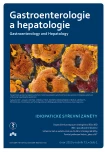Toxic and drug damage of the liver and kidneys
Authors:
Teplan V. 1–4; Ševela K. 5
Authors place of work:
Klinické a výzkumné centrum pro střevní záněty ISCARE I. V. F. a. s., Praha
1; 1. LF UK, Praha
2; Subkatedra nefrologie, Institut postgraduálního vzdělávání ve zdravotnictví, Praha
3; Katedra interních oborů a Interní klinika FN a LF OU, Ostrava
4; II. interní klinika FN u sv. Anny a LF MU, Brno
5
Published in the journal:
Gastroent Hepatol 2019; 73(1): 66-75
Category:
Vybrané kapitoly z vnitřního lékařství: přehledová práce
doi:
https://doi.org/10.14735/amgh201966
Summary
Prevalence of toxic injury with parenchymous organ damage has been growing over recent decades. This could be due poisoning in acute or long-term /follow up. The cause is direct damage or toxoallergic effect. The majority of cases are following oral administration. Therefore, first management should focus on all methods of elimination from the gastrointestinal tract (vomiting, diarrhoea, gastrolavage), by kidneys (forced diuresis), antidotal, and methods of drug elimination by hemoperfusion, hemofiltration, hemodialysis or plasmaferesis. Often there is combined liver and kidney damage. In serious cases the most frequent symptoms are – inhibition of central nervous system (CNS) with cognition disturbance, excitation of CNS, miosis, mydriasis, muscle cramps, cholinergic, anticholinergic symptoms, hyper-and hypoventilation, increased osmotic gap, and metabolic acidosis. Poisoning by methy lalcohol, ethyl alcohol, ethylene glycol, organic solvents, mushrooms, snake and insect toxins and analgesics are frequent. But the most frequent damage is evident after drug administration.
Key words:
nephrotoxicity – hepatotoxicity – elimination – clinical features – treatment
Submitted: 31. 10. 2018
Accepted: 3. 2. 2019
The authors declare they have no potential conflicts of interest concerning drugs, products, or services used in the study.
The Editorial Board declares that the manuscript met the ICMJE „uniform requirements“ for biomedical papers.
Zdroje
1. Ševela K. Akutní intoxikace a nefrotoxické poškození ledvin. In: Teplan V (ed). Praktická nefrologie. 2. zcela přepracované a doplněné vydání. Praha: Grada Publishing 2006: 459– 479.
2. Aggarwal P, Handa R, Wali JP. Acute poisoning – management guidelines. J Indian Academy Clin Med 2017; 5(2): 142– 147.
3. Teplan V. Nefrologické minimum pro klinickou praxi. 2. přepracované a doplněné vydání. Praha: Mladá fronta 2017: 231– 257.
4. Ševela K, Ševčík P et al. Akutní intoxikace a léková poškození v intenzivní medicině. 2. doplněné a aktualizované vydání. Praha: Grada Publishing 2011.
5. Seyffart G. Poison index: The treatment of acute intoxication. Lengerich: Pabst Science Publishers 1997.
6. Petejová N, Martinek A. Acute intoxication in the intensive care unit. In: Petejová N, Marti-nek A (eds). The basic principles of critical care nephrology. New York: Nova Science Publishers, Inc. 2018: 125– 151.
7. Rademacher S, Oppert M, Jörres A. Artificial extracorporeal liver support therapy in patients with severe liver failure. Expert Rev Gastroenterol Hepatol 2011; 5(5): 591– 599. doi: 10.1586/ egh.11.59.
8. Mydlík M, Derziová K. Liver and kidney in acute poisoning. Bantao J 2006; 4(1): 30– 33.
9. Bursová M, Hložek T, Čabala R. Simultaneous determination of methanol, ethanol and formic acid in serum and urine by Headspace GC-FID. J Anal Toxicol 2015; 39(9): 741– 745. doi: 10.1093/ jat/ bkv075.
10. Kaplan MS, McFarland BH, Huguet N et al. Acute alcohol intoxication and suicide: a gender-stratified analysis of National Violent Death Reporting System. Inj Prev 2013; 19(1): 38– 43. doi: 10.1136/ injuryprev-2012-040317.
11. Henderson WR, Brubacher J. Methanol and ethylene glycol poisoning: a case study and review of current literature. CJEM 2002; 4(1): 34– 40.
12. Mydlík M, Derziová K. Náhle zlýhanie obliček po akútných otravách. In: Teplan V (ed). Akutní poškození a selhání ledvin v klinické medicíně. Praha: Grada Publishing 2010: 291– 301.
13. Garcia J, Costa VM, Carvalho A et al. Amanita phalloides poisoning: Mechanisms of toxicity and treatment. Food Chem Toxicol 2015; 86: 41– 55. doi: 10.1016/ j.fct.2015.09.008.
14. Sorge M, Weidhase L, Bernhard M et al. Self-poisoning in acute care medicine 2005– 2012. Anaesthesist 2015; 64(6): 456– 462. doi: 10.1007/ s00101-015-0030-x.
15. Ševela K. Akutní intoxikace se selháním ledvin. In: Teplan V (ed). Akutní poškození a selhání ledvin v klinické medicíně. Praha: Grada Publishing 2010: 271– 289.
Štítky
Dětská gastroenterologie Gastroenterologie a hepatologie Chirurgie všeobecnáČlánek vyšel v časopise
Gastroenterologie a hepatologie

2019 Číslo 1
- Metamizol jako analgetikum první volby: kdy, pro koho, jak a proč?
- Horní limit denní dávky vitaminu D: Jaké množství je ještě bezpečné?
- Léčba akutní pooperační bolesti z pohledu ortopeda
- Neodolpasse je bezpečný přípravek v krátkodobé léčbě bolesti
Nejčtenější v tomto čísle
- Clensia® – první kombinovaný očistný prostředek se simetikonem
- Toxické a lékové poškození jater a ledvin
- Překvapivá etiologie stenózy terminálního choledochu
- Terapeutický test s inhibítory protónovej pumpy v manažmente pacientov s laryngofaryngálnym refluxom
